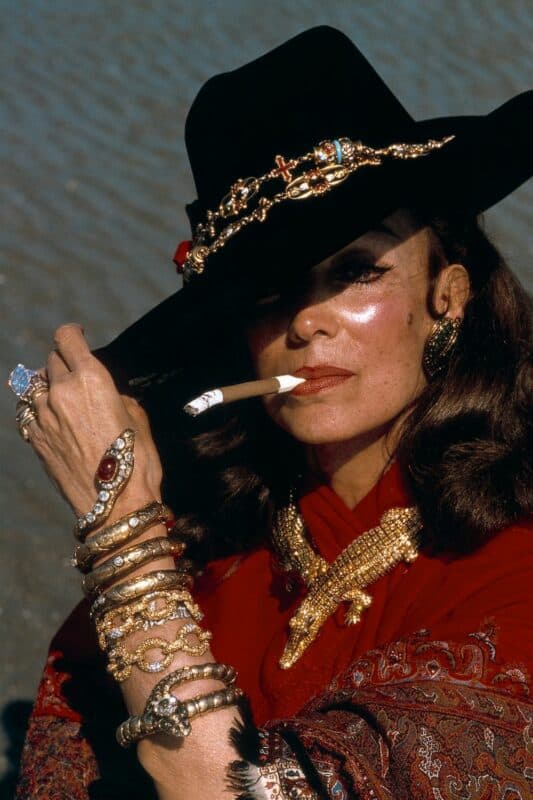
Reconstructed architecture and artifacts can be appropriated for viewers to reassess their understanding of history. Iconography is the basis of architectural history, and sculptor Andrea Ferrero illuminates a parallel between the power of tradition and rituals and the stylized architecture of other cultures. This exploration allows the artist and viewers to wonder how architecture could communicate to the general public and also grapple with the more arduous duty of expressing shared stories, defining aspirations, and commemorating time.
Ferrero lives between Mexico City and Lima and primarily works in reimagining interior and exterior spaces by reconstructing architecture and creating imagined representations. Ferrero focuses on exploring colonial architecture as well as inventing constructions of a Latin American landscape. Using history, archives, and materials, she examines the timeline, dreams of alternatives, and explores the future.
Ferrero is drawn to how the human body interacts with architecture and how human remains—physical, historical, and intellectual—are embedded in the surrounding environments of the places we celebrate and also call home. During the last few years, Ferrero has expanded her practice into the culinary arts, focusing on food and its role within classes and cultures and the spaces and traditions it has contributed to. By researching the political dimensions of food as well as the power dynamics and relations certain foods embody, Ferrero can trace the source of many elements that make contemporary cultures what they are today.
She received a BFA from the Pontificia Universidad Católica del Perú; she was awarded Honorable Mention in the Premio a la Crítica in 2015, and in 2019, she received the Virginia A. Groot Foundation Award. Ferrero has participated in artist residencies including Pivô arte e pesquisa, São Paulo; Despina, Rio de Janeiro; MANA Contemporary, New Jersey; Mass MoCA, Massachusetts; SOMA, Mexico City; HANGAR, Lisbon; and FLORA ars+natura, Bogotá, among others.
Ferrero’s work has been shown at Museo Jumex, Mexico City; TMOFA, Taoyuan; Swivell Gallery, New York; Gallery Shilla, Seoul; and Museo de Arte Contemporáneo, Lima. She recently participated in the Malta Biennale 2024, a residency at Fountainhead Arts, Miami, in June 2024, and the exhibition, Still to be Named, at Galería Santa Fe in Bogotá in August 2024.
Ferrero will participate in the exhibition OTRXS MUNDXS, curated by Aram Moshayedi, at Museo Tamayo in Mexico City from November 28th, 2024, to February 23rd, 2025.


When you are in another city that is not “home” or a familiar place, do you find yourself reviewing the city’s identity? Are you sensitive to, and do you sympathize with, the power of architecture, especially in a place that has deep roots in colonization?
Absolutely – It is so interesting to spend time in a new city because although it might be completely different to my hometown or the city I live in, the iconographies and symbols that lie in public spaces have often adopted similar strategies of power. I work a lot on site specific projects so it is always an incredible experience to do research in local archives and just walk around a new space taking 3D scans and photos of monuments, structures and buildings that interest me.

Do you recall a memory, a significant encounter, or a specific historical or contemporary event regarding the colonization of Latin America that energized your interest in creating work that responded to colonial histories?
You know, what is so extraordinarily violent about monuments is they are invisible. We forget they exist, we have no idea who that man in the horse is, or why that other one is pointing south or why that horse is stepping on an arrow quiver or what that memorial text reads. And the same thing happens with the decorative tools of disguise that have been used to adorn major buildings – they are a strategy of intimidation and domination… and now we use these neoclassical and famously European ornaments to adorn our houses, our parks, our public spaces. I think that it is precisely in these subtleties that their power lies, and it is when I started to notice these details that I began reflecting on my own city, on the thousands of monuments I overlooked for years, and I became deeply interested in power games and tactical, strategical power dynamics.

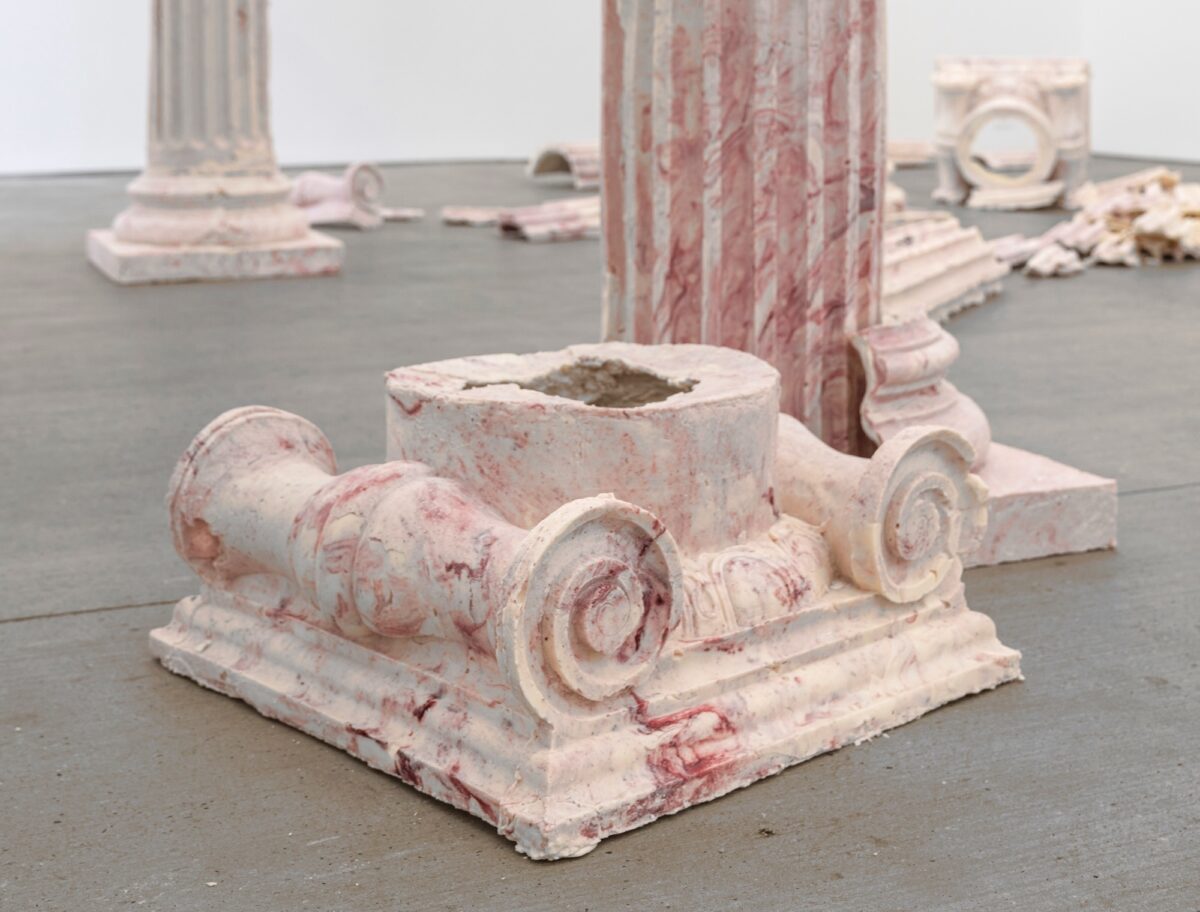

Research is a pivotal aspect of your process; you invest time in structures and materials as well as the memories and ideologies imbued into the objects. You mine archives for historical photographs and transcripts and also look into the history of art. Have you ever embarked on oral histories with locals, historians, or sociologists?
I like to weave historical facts together with hearsay, political myth, personal stories, prophecies and possible futures. Reading blog posts, Reddit, discovering non official stories and “historical gossip” is the most interesting part. These add so many layers to my work and I really like working on the possibility of something rather than the actual hard truth, whatever that means… In the end what we know to be “official” is just a political decision, but it is the hearsay, the myths, the stories passed down for generations that allow for a better and much more accurate understanding of an event, a monument, a building, a way of thinking, you know?
When grappling with a subject as big as history and with a 21st-century society moving somewhat too quickly into the future, what do you believe is the most effective way for people to be reminded of, and sometimes confronted with, forgotten and overlooked history?
For me, it is the possibility to fantasize with possible futures (or pasts), and the staging of fictional scenarios becomes a means to do precisely that – What I like to do in my work is to generate contradictions; rearrange fragments of architecture that have been recreated in non permanent materials to configure new and different histories that have so many different readings and layers embedded in them. I aim to generate exercises of collective imagination, inviting the audience to dream with other possibilities, fantasize with alternate realities.

For the past few years, you’ve moved slightly from using more common materials like steel, wax, plaster, resin, and rubber and opted for editable materials such as cake and chocolate. Can you share the sociopolitical and cultural significance of the decisions behind these material choices?
A couple of years ago when the pandemic hit and everyone started baking I of course did too, and I became very interested in the history of baking; of cake, of ceremonials centered around food and dessert, specifically. At the time, my work was very focused on power games in architecture, and so I became deeply interested in this sort of tactical power play behind eating rituals that is very present in ornamental architecture too. I started researching food ceremonials and operatic spectacles staged around food in European courts, where feasting represented aggressive displays of political power and resources, and opulent banquets were hosted to show off precious foods extracted from newly controlled colonies. Sugar became a luxury good at the expense of the monopoly of land and enslavement of black and indigenous people while in Europe, pastry chefs were venturing on the creation of elaborate monuments entirely crafted from sugar. These manifestations of decadence enacted power strategies similar to those used in architecture and really caught my attention… So I began to draw a parallel between the strategic power play behind food rituals and ornamental architecture. On one hand colonial architecture has long been a form of visual and symbolic conquest, while at the same time banquets and feasts have also been theatrical stagings of political power and grandiosity.
I began researching the spaces and buildings where celebrations of the independence wars in Latin America took place, focused on Perú and Mexico, and then replicating fragments of monuments in these “precious foods” and ingredients, like chocolate and sugar, and from there I delve deep into edible sculptures – I started experimenting with hosting my own banquets, experimenting with gelatin, I began making molds of objects I found at flea markets and printing 3D scans to replicate ornaments in edible ingredients… I discovered an element of provocation, of surprise, and of deceitfulness in my work that I became really interested in exploring, and also of displacement – of deconstructing the value of an object to then rebuild it in a different gaze. The chocolate sculptures, for instance, appear to be marble or concrete at first glance; the gelatin and sugar ones seem to be glass or resin perhaps – but then there is a sweet smell that starts to give them away, and the spell is completely broken when one touches, licks, bites into them. And then the fun part begins.
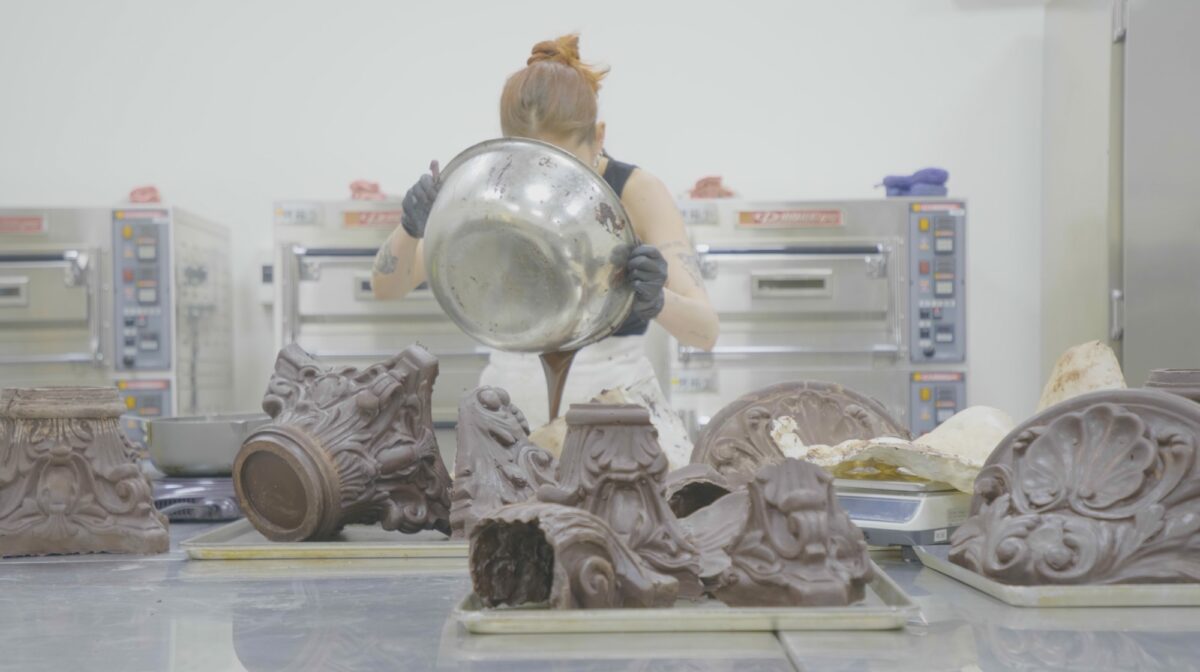
I appreciate that some of your sculptures that are editable are meant to be consumed by visitors, and as people eat, they are also digesting the complex topics and ideas the object or exhibition is presenting. How do you approach the notion of taste as an aesthetic tool in visual art?
Thank you! That is an aspect that I really like too, and that has become an interesting way of not only connecting to the audience but also of activating the work, of provoking exercises of collective imagination. One of the aspects that interest me the most is the idea of eating, digesting, metabolizing and excreting symbols of power – and I feel like this sounds so obvious said out loud but it is really interesting to see it happen; to involve the audience in this sort of ephemeral sweet bacchanalia – chocolate is something that most people love to indulge in, so there are aspects of gluttony, of greed, of control that come up, and perhaps that becomes an aesthetic tool in itself… I think the way you phrase this as a notion of taste being an aesthetic tool is so interesting.



In museums, I always find it perplexing when items from cultures, especially utilitarian objects, are put in a vitrine and “retired.” I had the same sense of curiosity and feelings when coming across your work, Architectural Digest and Disguises of Power, but in this case, the objects are faux ruins that are placed inside a refrigerator. Can you explain the decisions behind these sculptures and displays?
I love that concept of “retired”, outdated. I also like to think of a fragmented piece of architecture as a comforting reminder that most empires fall. I think perhaps that’s what’s so alluring and seductive about ruins to me. And I think this is what I try to do with these installation works, to propose this new reading- in a way it is a re-enactment of symbols of power: decorative tools of disguise historically used to adorn powerful buildings, ornaments and specific symbols are recreated in chocolate, stripped off of their permanence. Their durable materials, both physical and political, are replaced with edible ones. Just fragments of these huge powerful buildings and symbols are left – Ephemeral, temporary, fragile reminders.


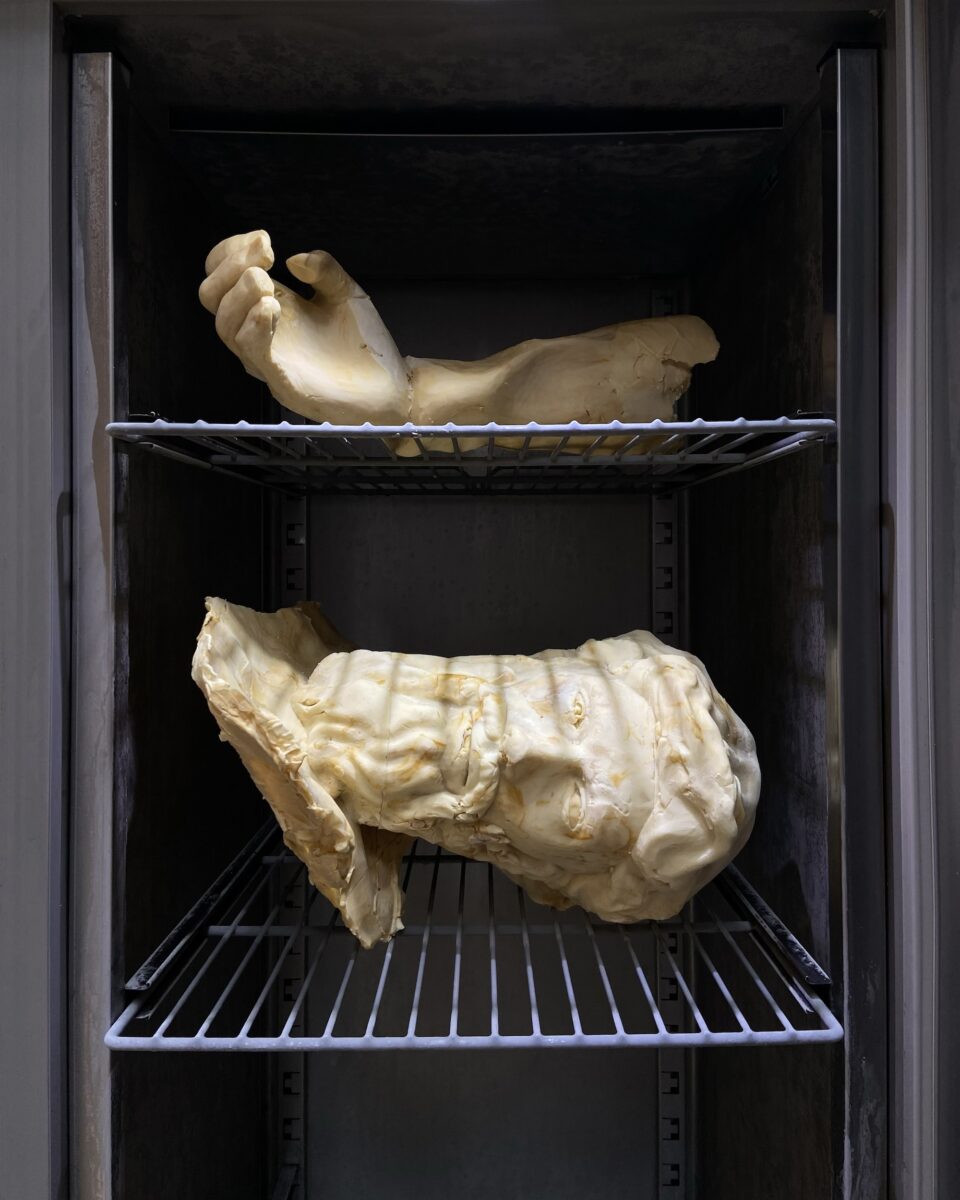
Do you have any aspirations towards creating an outdoor sculpture that responds to or counteracts a memory? If so, where would be a physical area of interest?
I’m a little obsessed with this idea to be honest. I can not say this in print or else it will never happen haha but I dream about a huge chocolate outdoor sculpture that is consumed by pedestrians. As to where that would be… honestly I am open to any space, so please if anyone reading this knows how we can make this happen please reach out to me!



Can you share any new techniques or ingredients you have been working towards?
My studio has slowly become an artist studio/kitchen so I am enjoying spending time there and exploring new techniques such as chocolate modeling. I have been trying out sugar again… it is quite a difficult ingredient to work with when melted, the temperature needs to be very precise, for instance.. but pressing it like a sugar cube is also really interesting so I am exploring that. I am also going back to steel gates and structures a little bit, as well as 3D prints dipped in chocolate and other new techniques, but I wouldn’t want to give much of that away! There are new works coming soon that I am really excited to show.
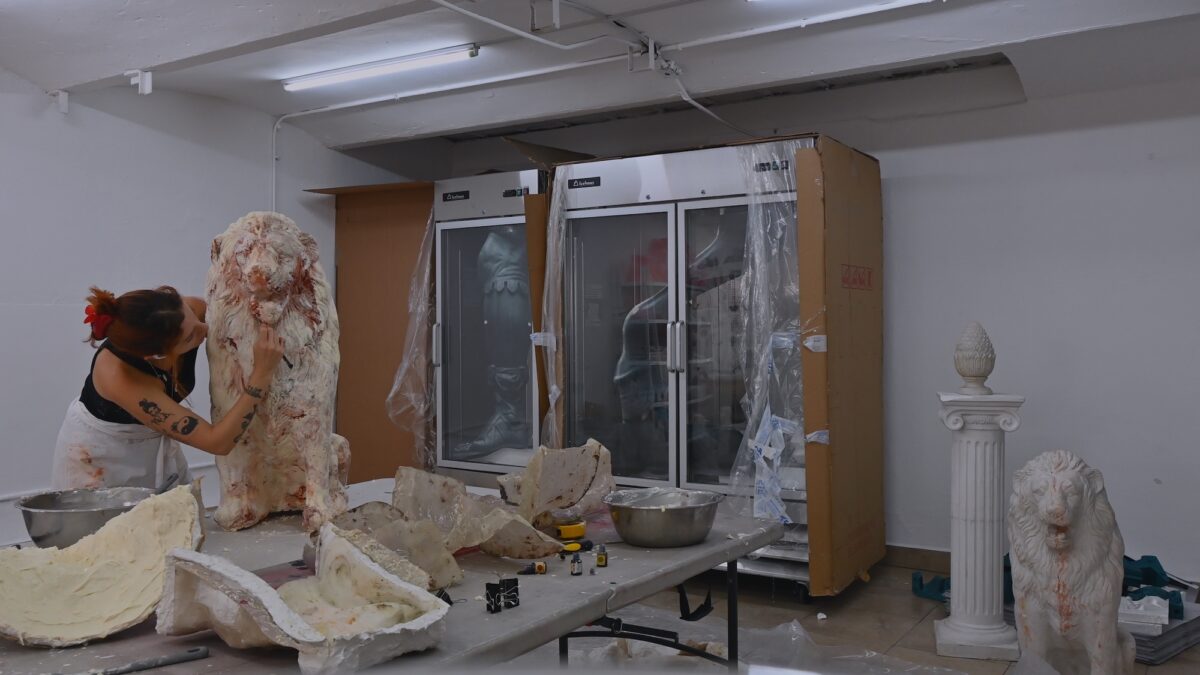
To learn more about Andrea Ferrero, follow her on Instagram at @andreaferrerop and visit her website at andrea-ferrero.com




